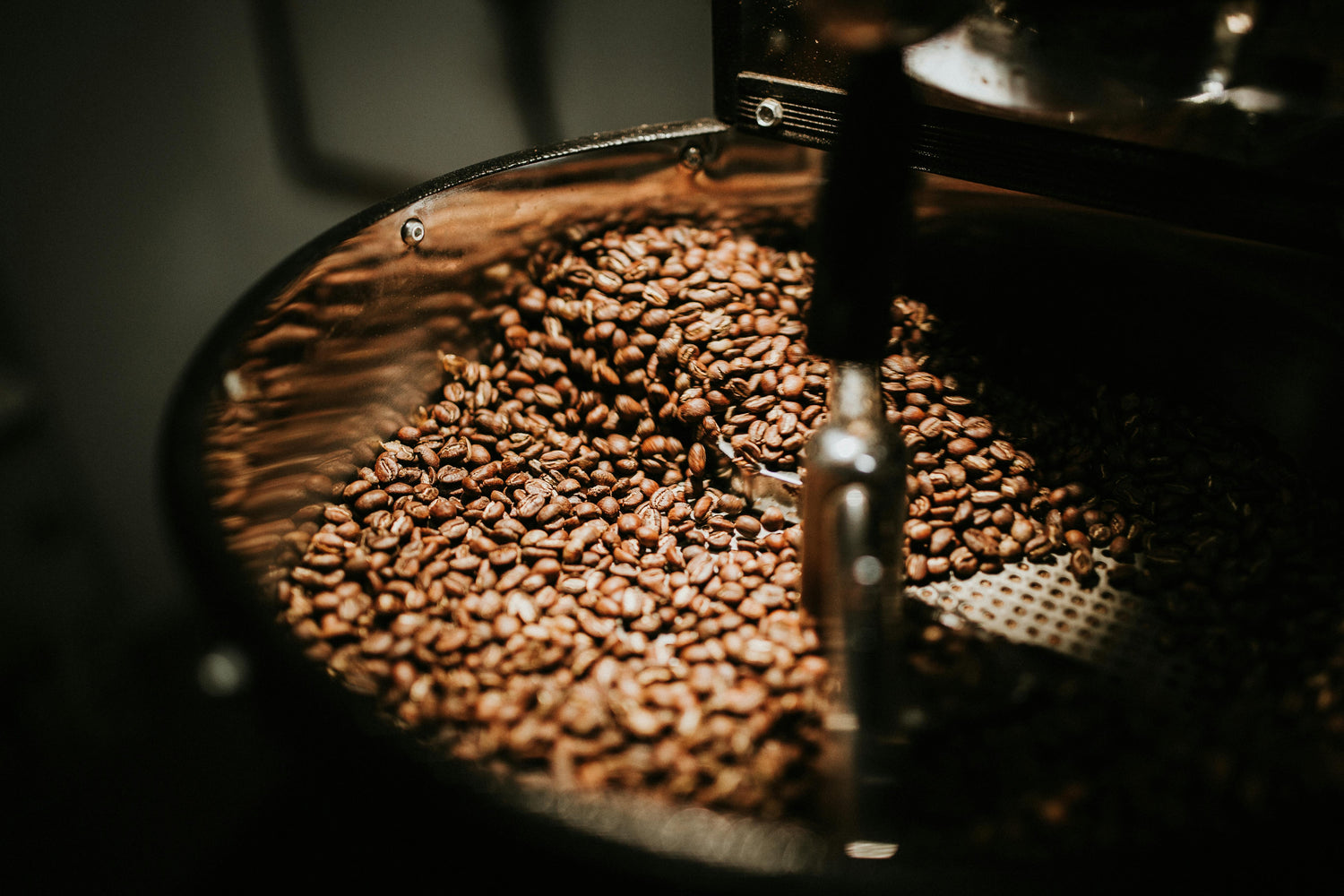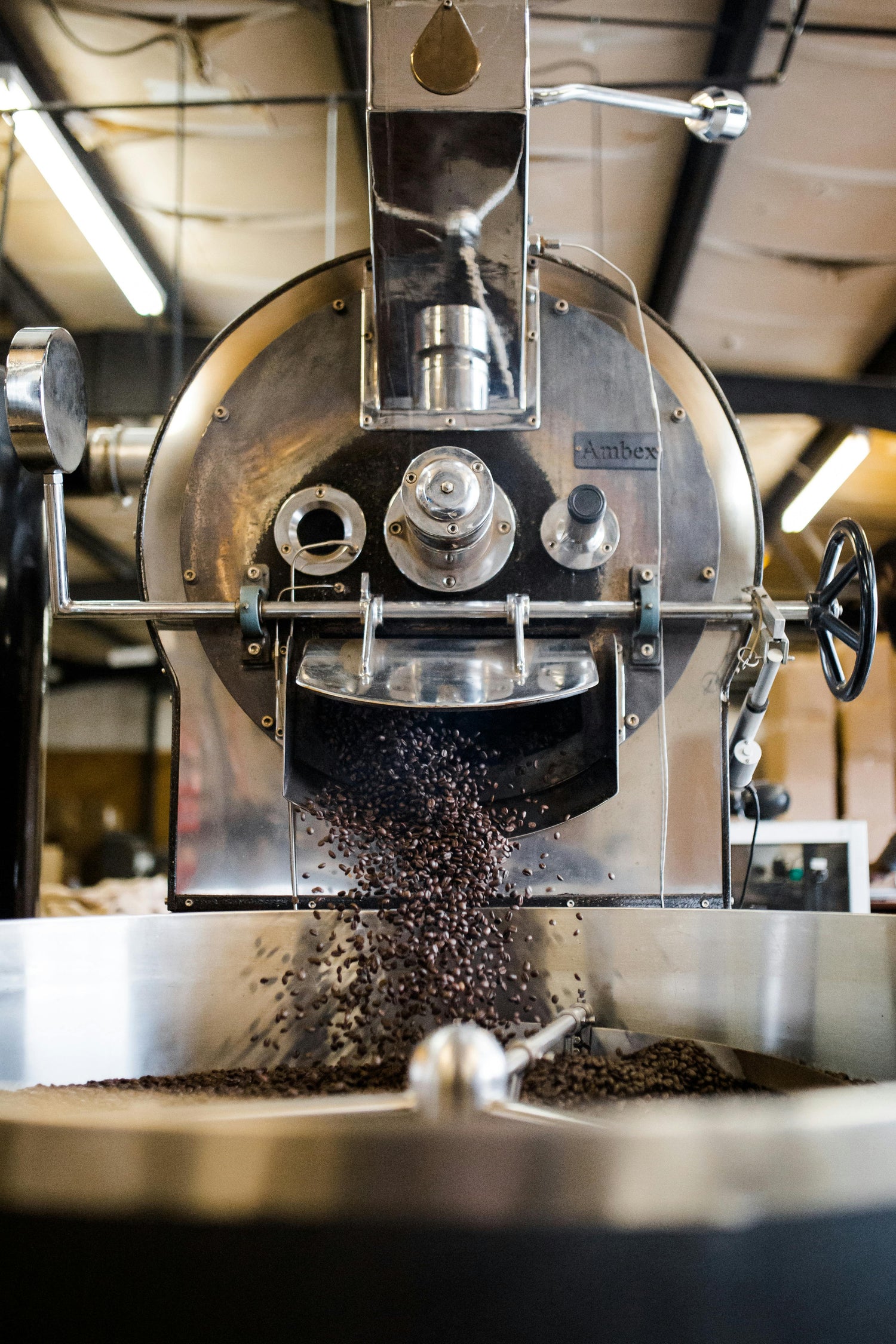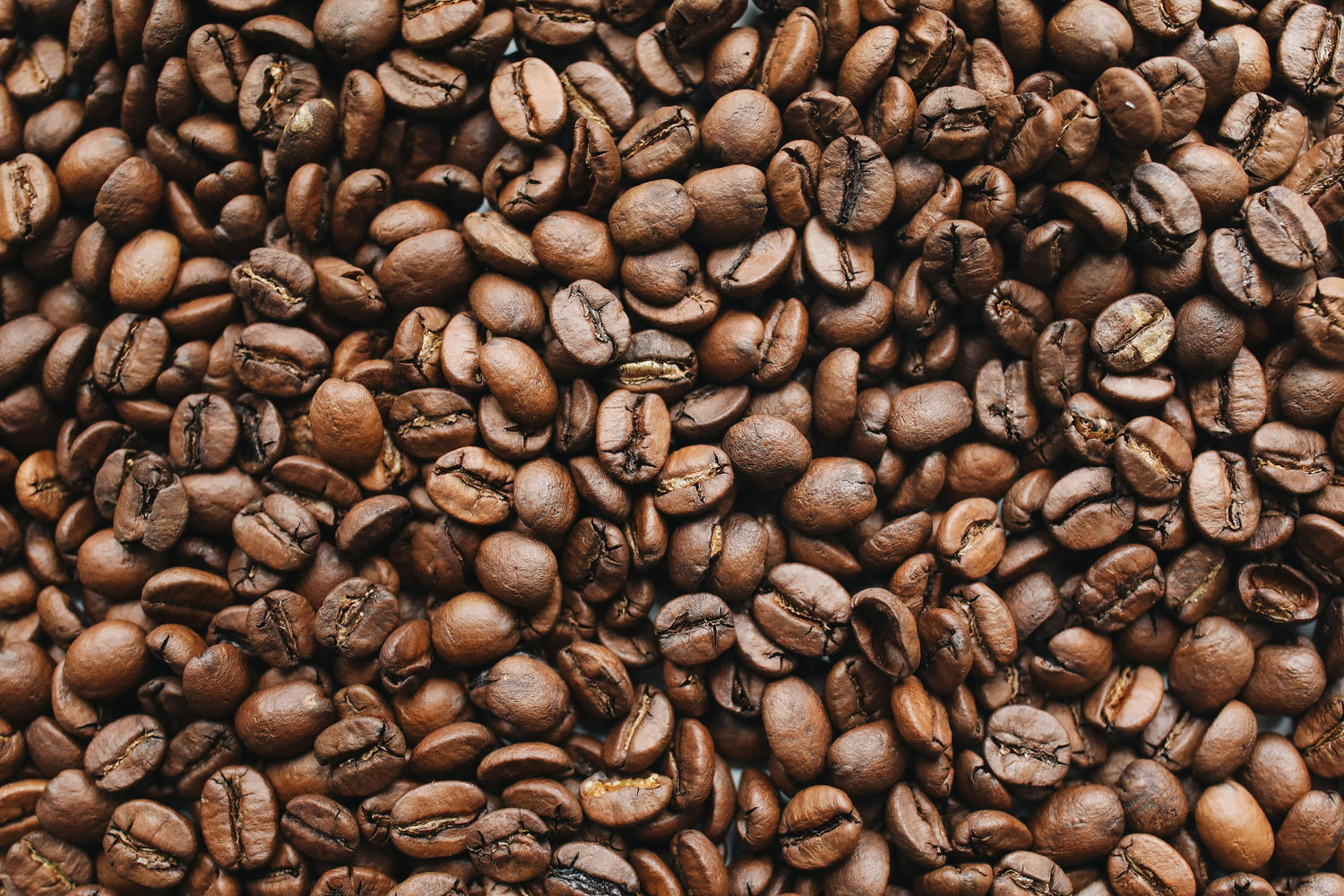
What is coffee roasting
Its Complex!
Roasting coffee is a complex and carefully controlled process. As green coffee is exposed to heat, it undergoes a series of chemical and physical transformations. Initially pale and dense, the beans transition to yellow and then brown as the Maillard Reaction begins—this is where sugars and amino acids interact to produce the rich aromas and flavours we associate with a great cup of coffee.
As the roast progresses, internal moisture evaporates and pressure builds within the bean, eventually causing an audible “crack.” This marks a significant turning point, as the beans expand in size and shed their outer layer of chaff, losing from 13%- 20% of their original weight.
Beyond this stage, how far we continue to roast directly influences the coffee’s flavour profile. Every decision we make; from development time to roast level; is driven by the goal of bringing out the best characteristics in each bean. Ultimately, it’s a balance of science, craft, and personal preference that shapes the final experience in your cup.

How We Roast
Drum roasting is one of the most traditional and widely used methods of roasting coffee. It involves placing green coffee beans into a rotating cylindrical drum, which is heated externally; usually by gas or electric burners. As the drum rotates, the beans tumble and are roasted through a combination of conduction (direct contact with the hot drum surface) and convection (hot air circulating within the drum).
Why We Use Drum Roasting
- Drum roasters allow for precise control over temperature, airflow, and drum speed. This means we can tailor profiles to bring out the best in each coffee whether that’s highlighting acidity, sweetness, or body.
- The tumbling action ensures the beans roast evenly, minimizing the risk of scorching or tipping (burns on the bean’s surface).
- Because heat transfer is gradual and controllable, drum roasters are excellent for developing complex flavour profiles. We can manipulate key stages; like drying, Maillard reaction, and caramelisation with precision.
- We prefer drum roasting because of the tactile, hands-on approach. It emphasizes craftsmanship and sensory feedback, aligning with the values of quality-focused coffee production.

The Difference between light and dark roasts
The length of time coffee is roasted has a big impact on the flavour you experience in the cup. A light roast, developed just past first crack, tends to highlight the coffee’s natural acidity and brightness bringing forward citrus, floral, and herbal notes.
As we roast further, the coffee’s sugars begin to caramelise, boosting sweetness and adding more body. Pushing the roast even darker leads to deeper, roast-driven flavours and less of the coffee's original character. At this stage; approaching second crack you’ll often find oily, bold, smoky profiles, with reduced acidity and sweetness.
While many takeaway coffee shops serve dark-roasted coffee, which can taste consistent and bold in milk-based drinks, we prefer to roast on the medium side. This approach lets us showcase the unique origin characteristics of each bean; whether it’s chocolate and red berries from Colombia or stone fruit and florals from Ethiopia.
Striking the right balance between acidity, sweetness, and body is what we aim for in every roast. It’s a challenge, because no two coffees are the same; but that’s also what makes it exciting.
At the end of the day, there’s no right or wrong. Coffee is personal, and the best cup is the one you enjoy most. We believe in sweet, clean, character-filled flavour and we hope you’ll taste that in every brew.
FAQ
What kind of coffee do you roast?
We roast specialty-grade, ethically sourced coffee. Our focus is on bringing out the unique flavour notes of each origin; whether it's fruity and floral or rich and chocolatey.
Do you roast light, medium or dark?
Our roasting style leans toward the medium end of the spectrum. This allows us to highlight the coffee’s natural sweetness, clarity, and origin character, without losing body or balance. While many commercial coffees are roasted dark, we believe a medium roast offers more complexity in the cup.
Where do you deliver?
We deliver Australia-wide. Our shipping is fast and reliable to ensure your beans arrive fresh, no matter your location.
Why don't you roast super dark like some cafe's
Dark roasts tend to mute the coffee’s origin flavours and push burnt or bitter notes to the front. While that can work well for a bold, milk-heavy coffee, we prefer to showcase the distinct flavour profiles of each bean; so you can taste where the coffee came from, not just the roast.
How fresh is the coffee we receive?
We roast to order in small batches and ship promptly; usually within 1–2 business days. Your coffee will always arrive fresh, flavourful, and ready to brew.
Why does your coffee taste different to supermarket or cafe coffee?
Because we roast for flavour, not shelf life. Our beans are roasted to highlight their natural qualities; not masked by overly dark roasting. Most commercial coffee is roasted for uniformity, often losing the complexity we work hard to preserve.




